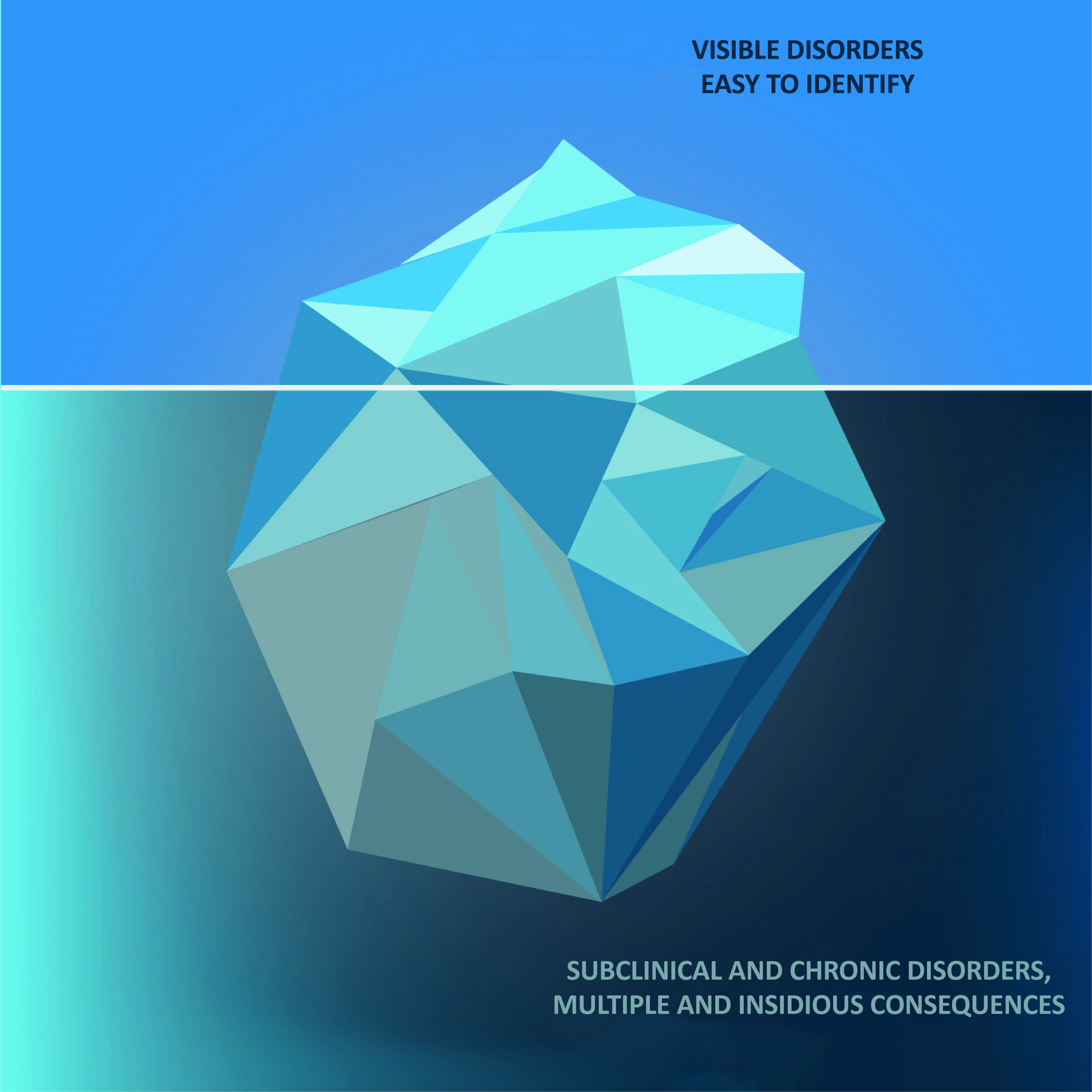Importance of trace elements in animals
Trace elements: definition and rolesDefinition
Trace elements are elements present in the organism in very small amounts (in the order of ppm). Their recommended daily supplies are in mg/kg of dry matter of the ration (DM). On the opposite, the recommended daily supplies of macro minerals, such as Calcium and Phosphorus are in g/kg DM. We find them in much higher quantities in the tissues.
Essential trace elements are elements meeting the following criteria:
- They are present in all the healthy tissues of an individual,
- Their concentration within the organism do not vary significantly,
- A deficiency of this element leads to enzymatic and cellular dysfunctions which have an impact on the health status of the animal, that is in various species,
- A supply of this element allows to prevent or correct physiological disorders led by deficiency (Chappuis & Poupon 1991).
About fifteen elements correspond to these criteria. However, only 8 trace elements are of major importance in animal nutrition: Copper, Zinc, Selenium, Manganese, Iodine, Cobalt and, not to a lesser extent, Iron and Molybdenum.

Importance of trace elements : video
Implications
They are involved in numerous cellular mechanisms and have many roles :
- They act in numerous mechanisms of protection of the organism: immune systems, protection against oxidative stress…
- They are essential components of proteins, vitamins, lipids, or even carbohydrates.
- They act as enzymatic activators or in the synthesis of metalloenzymes involved in numerous functions: bone metabolism, transport of electrons, homeostasis of cells…
Trace elements are as important in the feed as proteins or energy. Their supply has to be measured and controlled. Indeed, a deficiency or an extra can impact production performances and health of the herd (McDowell 2003).
The development of agriculture and production methods facilitated the occurrence of mineral deficiencies, especially in ruminants, because of forages depletion in mineral elements. It impacts mainly cattle and small ruminants as, in most farms, herds are fed with locally produced forages; contrary to industrial pig or poultry farms that receive complete feed and of which the composition in minerals is closely monitored and balanced. Furthermore, selection of hyper performing breeds such as the Holstein in dairy farms, or the Belgian Blue in beef farms, causes an increase of the animal needs in trace elements. Therefore, there is an increase of the needs and a decrease of supplies which partly explains more and more frequent apparition of disorders linked to mineral deficiencies.
Primary and secondary deficiencies
Even if mineral supplementation is nowadays provided by quite a few breeders of ruminants, it is not always controlled and different types of deficiencies are still seen on farms :
- Primary deficiencies, due to a lack of supply: they come from either a depletion of the quantity of trace elements available in the soil, or from a decrease of this quantity in forages, or a poor assimilation from the animal,
- Secondary deficiencies, driven by competition between elements, such as deficiencies of Copper by excess of Molybdenum and/or Sulphur in the ration (Meschy 2010).
Clinical and subclinical deficiencies
From a symptomatology point of view, two types of deficiencies can be identified :
- Clinical deficiencies, severe deficiencies with defined and recognizable clinical signs. These deficiencies become more and more rare but remain on some farms.
- Sublinical deficiencies, which develop slowly and lead to significant economic losses. They are more or less recognizable.

Therefore, diagnosis of trace elements deficiencies is difficult to make, as most of the time signs are non-visible and non-specific. One animal is not enough to represent the clinical status of the herd. Finally, the frequency of apparition of symptoms can vary depending on the geographic location. Therefore, this diagnostic element represents a major issue for both the farmer and the vet.
 Contact
Contact Export
Export